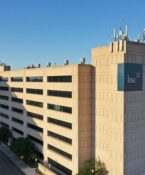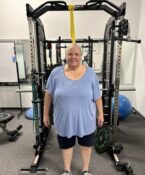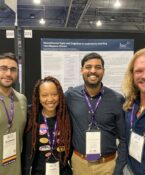Putting Patients First
In addition to potential shortages in primary care specialties, the demand for specialists that provide care for patients over 65 will increase significantly. But by 2020, the number of cardiologists is expected to drop by 20 percent. The demand for oncologists is expected to grow by 48 percent over the next 10 years, but supply is only expected to grow by 14 percent. A staggering 58 percent of clinical genetic residencies go unfilled, and current demand for endocrinologists exceeds supply by 15 percent. And this is just the tip of the proverbial iceberg.
Recommendations include training 3,000 to 10,000 more physicians a year – over and above the current 25,000 trained per year- just to keep pace. But the number of first-year enrollees in U.S. medical schools has also declined steadily since 1980. Hardest hit is the field of primary care, as new physicians gravitate to more lucrative, less time-intensive practice areas. A 2005 Academic Medicine study found that only 27 percent of third-year internal medical residents planned to enter general internal medicine, a fall from 54 percent in 1998. Meanwhile, the number of Americans over age 65 is expected to double from 35 million today to 71 million by 2030, representing nearly one-fifth of the population and driving even more demand for primary care physicians.
This impending collision will inevitably result in poorer access to quality care, longer waits for appointments, shorter visits with doctors and a further erosion of our already-stressed health care system. The Association of American Medical Colleges (AAMC) also notes that this shortage is likely to have an uneven effect, with some geographic areas, specialties and subpopulations hit harder than others, resulting in hardships for both poor urban and rural communities that are already hard hit.
And when you realize that it takes a good 10 years to train each new physician, it’s obvious how far we are already behind the eight ball. Clearly, something needs to be done in order to assure a healthier and more productive workforce in tomorrow’s economy. But what?
One answer: increase medical student enrollment and graduate medical education (GME), or residency, opportunities. The AAMC has already recommended a 30 percent increase in U.S. medical school enrollment and an expansion of GME positions to help solve the problem. But graduating more physicians, as we plan to do at the UNT Health Science Center, is just part of the solution. Keeping them in the state from which they graduate is key. As noted in the AAMC’s report, "2008 Physician Specialty Data," nearly 48 percent of physicians pursue GME opportunities, or residencies, in states other than those from which their medical schools are located. Here in Texas, the second-most populous state, we only rank 27th in the number of available GME slots. And since GME programs are expanding at just 4 percent in our state, we cannot expect that ranking to improve anytime soon.
Another set of solutions to the physician shortage: Improve efficiency, reconfigure the way some services are delivered and make better use of the physicians we already have. Consider the primary care system known as the "advanced medical home" – it’s a comprehensive, one-stop network of resources that integrates the concept of the old-time family doctor with a whole-person approach to specialty care through networked teams of specialists in a collaborative environment. The result is a more efficient approach to health care than benefits both patient and physician in terms of efficient use of thin resources.
Still another solution is already underway: the retail health clinic, or oft-maligned "doc-in-a-box" concept. RHCs have risen in popularity for relatively minor ailments and injuries because they offer fast, convenient service during and outside regular office hours. In a recent Tarrant County Physician article, past-president of the Tarrant County Medical Society, Gary W. Floyd, MD, noted that RHSs have proliferated because "(P)hysicians began dealing with insurance companies instead of our patients." He suggests that, rather than oppose the RHC trend, physicians consider establishing friendly relationships with local RHCs. The increased convenience and speed of care, as provided by properly supervised nurse practitioners and physician assistants at RHCs, could help patients avoid long waits for appointments while keeping the physician’s status as the core medical home intact.
These are just a few of the many examples being cited as possible solutions to this crisis. Many more are in debate now. But one thing is sure: the discussions will be time-consuming, complex, fraught with politics and the situation will not yield quickly to either simple nostrums or convoluted legal maneuverings. Yet doing nothingis not an option. As seen by the success of RHCs, the marketplace is already doing something. It behooves us as business people to pay attention to this debate and ensure that our elected officials hear from us and support decisions that will return the focus of health care to where it should be: the patient.





Social media